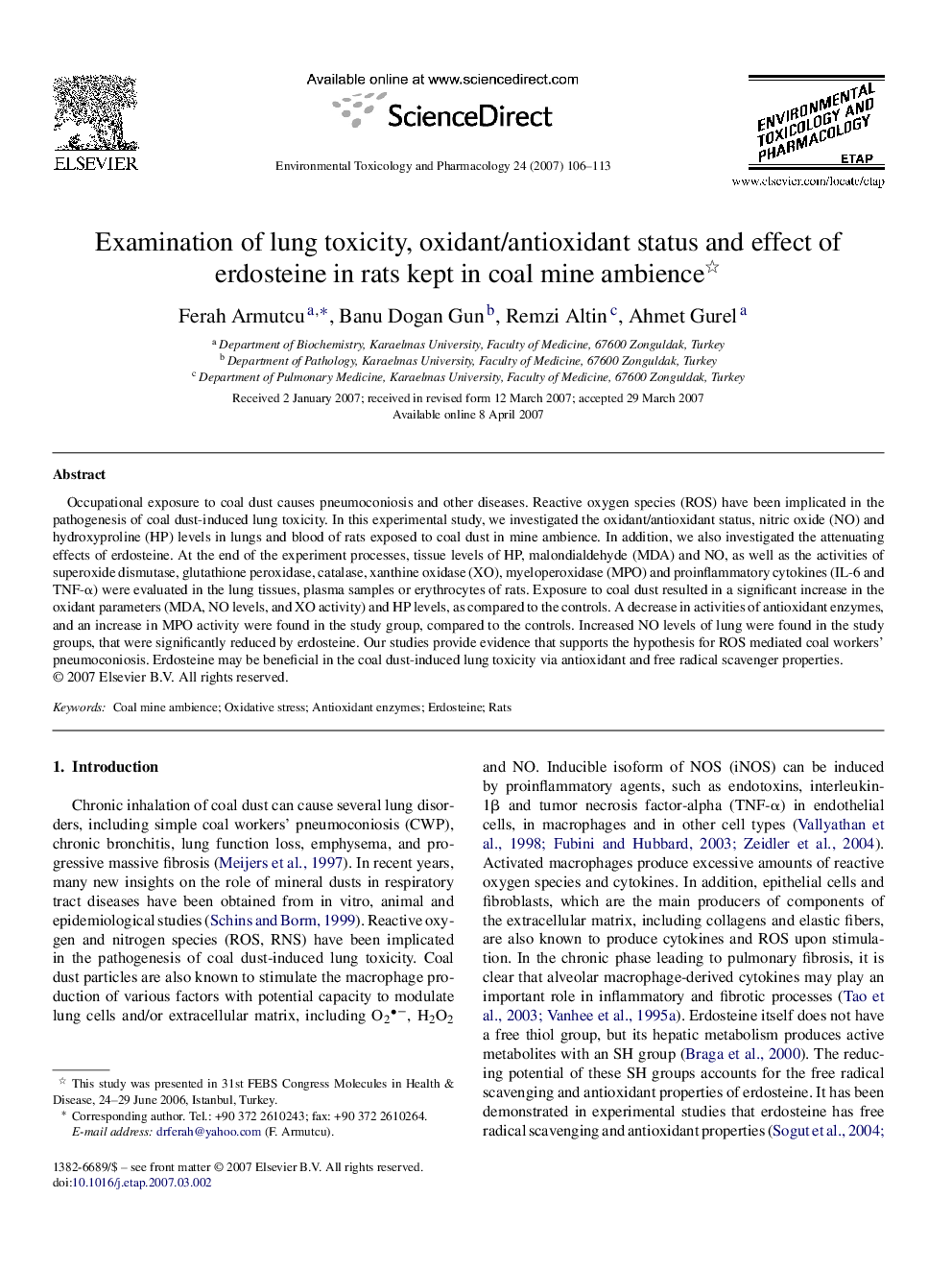| Article ID | Journal | Published Year | Pages | File Type |
|---|---|---|---|---|
| 2584441 | Environmental Toxicology and Pharmacology | 2007 | 8 Pages |
Occupational exposure to coal dust causes pneumoconiosis and other diseases. Reactive oxygen species (ROS) have been implicated in the pathogenesis of coal dust-induced lung toxicity. In this experimental study, we investigated the oxidant/antioxidant status, nitric oxide (NO) and hydroxyproline (HP) levels in lungs and blood of rats exposed to coal dust in mine ambience. In addition, we also investigated the attenuating effects of erdosteine. At the end of the experiment processes, tissue levels of HP, malondialdehyde (MDA) and NO, as well as the activities of superoxide dismutase, glutathione peroxidase, catalase, xanthine oxidase (XO), myeloperoxidase (MPO) and proinflammatory cytokines (IL-6 and TNF-α) were evaluated in the lung tissues, plasma samples or erythrocytes of rats. Exposure to coal dust resulted in a significant increase in the oxidant parameters (MDA, NO levels, and XO activity) and HP levels, as compared to the controls. A decrease in activities of antioxidant enzymes, and an increase in MPO activity were found in the study group, compared to the controls. Increased NO levels of lung were found in the study groups, that were significantly reduced by erdosteine. Our studies provide evidence that supports the hypothesis for ROS mediated coal workers’ pneumoconiosis. Erdosteine may be beneficial in the coal dust-induced lung toxicity via antioxidant and free radical scavenger properties.
